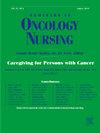癌症相关恶病质的非药物治疗:系统综述
IF 2.3
4区 医学
Q1 NURSING
引用次数: 0
摘要
癌症相关恶病质影响了大约50%至80%的癌症患者,并显著导致癌症相关死亡率,占死亡人数的20%。这种多因素综合征的特点是全身性炎症、厌食和能量消耗升高,导致严重的体重减轻和肌肉萎缩。了解潜在的机制对于制定有效的干预措施至关重要。虽然在过去十年中取得了进展,但大多数治疗方法都集中在药物制剂或营养补充剂上。本系统综述旨在通过检查非药物、非补充剂和非肠外治疗癌症相关恶病质的介入研究来解决一个关键的空白。方法系统评价遵循PRISMA 2020指南。本综述旨在确定非药物、非补充和非肠外治疗癌症相关恶病质的临床试验。文献检索包括PubMed, CINAHL和Scopus,目标是2014年至2024年间发表的研究。纳入标准要求研究以英文撰写,涉及18岁或以上的人类参与者,并专注于诊断为活动性实体瘤的个体。由于与这些疾病相关的独特饮食要求,涉及血液恶性肿瘤患者的研究被排除。结果检索到2949篇文献,其中10篇符合入选标准。非药物干预包括针灸、营养建议、教育和支持、信息小册子、行为改变支持和锻炼。在所有研究的干预类型和样本量上都观察到显著的异质性。大多数参与者都是门诊病人。通常,评估结果包括体重、体重指数、生活质量(QoL)和肌肉力量。这种差异突出表明需要采用更加标准化的方法来更好地评估此类干预措施的影响。结论运动干预可改善瘦质量、生活质量和疲劳。针灸等辅助干预措施在治疗癌症相关恶病质方面已显示出有希望的益处。这些包括改善食欲,提高Karnofsky性能状态(表明更好的功能能力)和减轻体重。虽然一些研究表明营养干预可能会对体重或饮食习惯产生积极影响,但证据仍不确凿。这突出了在护理过程中尽早开始干预的重要性,即在诊断和开始治疗之后,以最大限度地发挥潜在效益。此外,积极让患者参与他们的护理是至关重要的,因为这可以提高依从性,个性化策略,并更有效地解决个人需求。癌症相关恶病质的评估和非药物管理对提高癌症患者的生活质量至关重要。个性化的营养干预、教育项目、日常锻炼和量身定制的生活方式建议已经显示出对抗癌治疗期间的食物摄入、身体成分、疲劳程度和总体患者满意度产生积极影响的潜力。这些方法不仅解决了恶病质的生理挑战,而且还支持患者的心理和情感健康,有助于更全面和以患者为中心的护理策略。本文章由计算机程序翻译,如有差异,请以英文原文为准。
Nonpharmacological Management of Cancer-Related Cachexia: A Systematic Review
Objectives
Cancer-related cachexia affects approximately 50% to 80% of cancer patients and contributes significantly to cancer-related mortality, accounting for 20% of deaths. This multifactorial syndrome is characterized by systemic inflammation, anorexia, and elevated energy expenditure, leading to severe weight loss and muscle wasting. Understanding the underlying mechanisms is critical for developing effective interventions. While progress has been made over the past decade, most therapeutic approaches have centered on pharmacological agents or nutritional supplements. This systematic review seeks to address a critical gap by examining interventional studies that focus on nonpharmacological, nonsupplement, and nonparenteral strategies for managing cancer-related cachexia.
Methods
A systematic review followed the guidelines provided by PRISMA 2020. The review was conducted to identify clinical trials on the nonpharmacological, nonsupplement, and nonparenteral management of cancer-related cachexia. The literature search encompassed PubMed, CINAHL, and Scopus, targeting studies published between 2014 and 2024. Inclusion criteria required studies to be written in English, involve human participants aged 18 years or older, and focus on individuals diagnosed with active solid tumors. Studies involving participants with hematological malignancies were excluded due to the unique dietary requirements associated with these conditions.
Results
The search identified 2,949 articles, of which 10 met the eligibility criteria. The nonpharmacological interventions examined included acupuncture, nutritional advice, education and support, informational booklets, behavior change support, and exercise. Significant heterogeneity was observed in both the types of interventions and the sample sizes across the studies. Most participants were outpatients. Commonly, assessed outcomes included body weight, body mass index, quality of life (QoL), and muscular strength. This variation highlights the need for more standardized approaches to better evaluate the impact of such interventions.
Conclusions
Exercise interventions improved lean mass, QoL, and fatigue. Complementary interventions like acupuncture have demonstrated promising benefits in managing cancer-related cachexia. These include improved appetite, enhanced Karnofsky Performance Status (indicating better functional ability), and reduced weight loss. While some studies suggest nutritional interventions may positively impact weight or dietary habits, the evidence remains inconclusive. This highlights the importance of initiating interventions early in the course of care, just after the diagnosis and the start of treatment to maximize potential benefits. Additionally, actively involving patients in their care is crucial, as this can enhance adherence, personalize strategies, and address individual needs more effectively.
Implications for Nursing Practice
The assessment and nonpharmacological management of cancer-related cachexia play a vital role in enhancing the QoL for cancer patients. Individualized nutritional interventions, educational programs, exercise routines, and tailored lifestyle advice have shown the potential to positively impact food intake, body composition, fatigue levels, and overall patient satisfaction during anticancer treatments. These approaches not only address the physical challenges of cachexia but also support the psychological and emotional well-being of patients, contributing to a more comprehensive and patient-centered care strategy.
求助全文
通过发布文献求助,成功后即可免费获取论文全文。
去求助
来源期刊

Seminars in Oncology Nursing
Nursing-Oncology (nursing)
CiteScore
3.40
自引率
0.00%
发文量
68
审稿时长
45 days
期刊介绍:
Seminars in Oncology Nursing is a unique international journal published six times a year. Each issue offers a multi-faceted overview of a single cancer topic from a selection of expert review articles and disseminates oncology nursing research relevant to patient care, nursing education, management, and policy development.
 求助内容:
求助内容: 应助结果提醒方式:
应助结果提醒方式:


